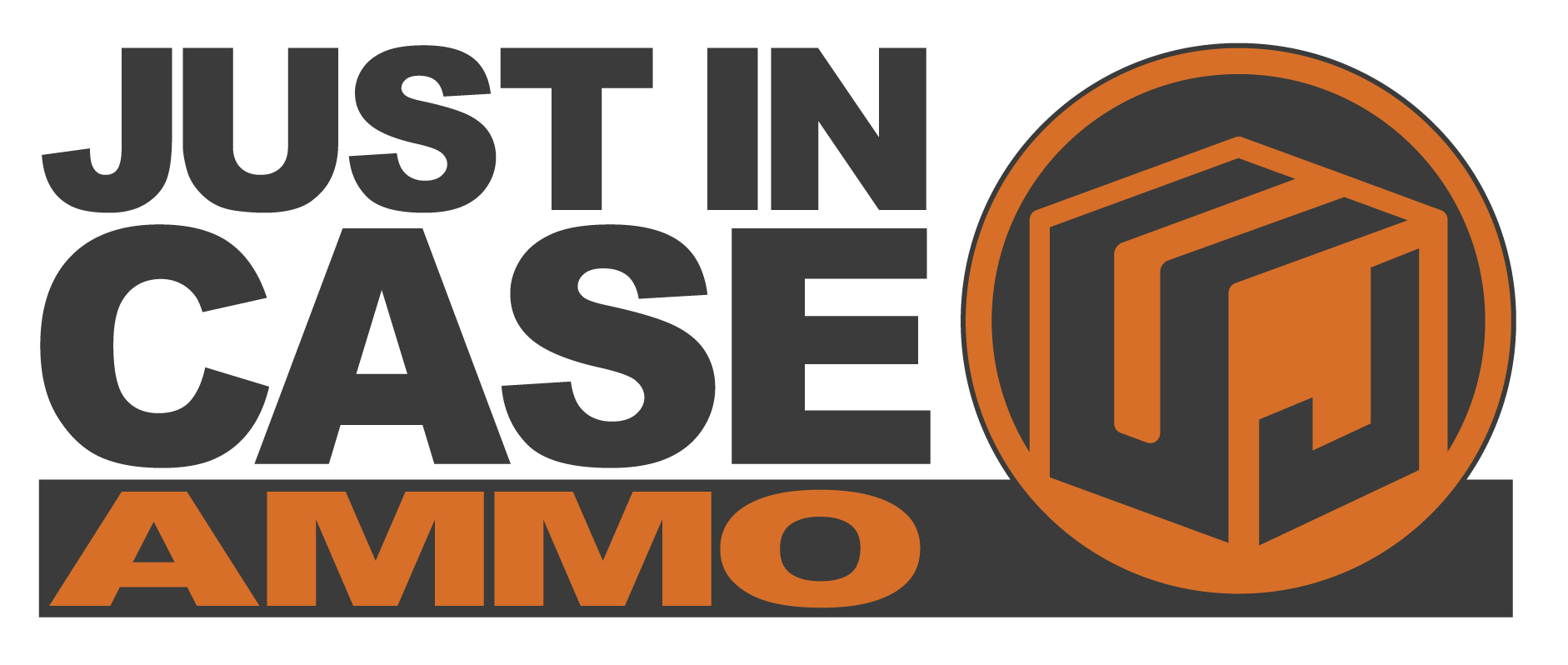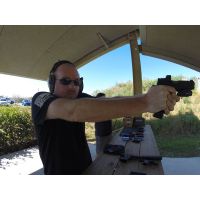Red Dot Sights (RDS) have become increasingly popular on pistols for competitive shooting, self-defense, and law enforcement applications.
This technology offers significant advantages in accuracy and speed, but like any modification, it comes with its own set of considerations.
In this article, we’ll explore the pros and cons of red dot sights on pistols, different types of emitters, common footprints, modular mounting systems, and some of the most popular RDS-equipped pistols on the market.


My experience with pistol-mounted red dot sights started roughly 13 years ago when I was gifted an FN FNP-45 Tactical (since replaced by FN with the FNX Tactical .45).
Optics on competition pistols weren't new then, but RDS on duty and carry pistols were still somewhat of a new and unexplored territory.
Pistol-mounted optics, even with the Pros of Red Dot Sights on Pistols with a Docter Optics sight mounted, were still a novelty for me, and this setup was merely a neat "range toy" that I enjoyed shooting with my suppressor.
That particular setup was certainly impractical at the time, requiring the optic to be removed from the pistol to unlock its ability to be adjusted.
*My FN FNP-45 Tactical now wears a much more practical red dot from Springfield Armory, the Hex Dragonfly.
Pros of Red Dot Sights on Pistols
Improved Accuracy and Faster Target Acquisition
RDS allow shooters to focus on a single plane, the target, as opposed to aligning sights on two different planes.
This simplifies the aiming process and can significantly increase accuracy, especially at longer distances.
Enhanced Visibility in Low Light
Red dots are easier to see in low light conditions compared to traditional iron sights, making them ideal for situations where lighting is not optimal.
Cons of Red Dot Sights on Pistols
Dependency on Electronics
RDS rely on batteries and electronics, which can fail.
Regular maintenance and check-ups are essential to ensure reliability. Iron sights that can be used in conjunction with the RDS are a huge plus here.
Typically, iron sights will have to be taller to clear the RDS and co-witness with the dot to be useful.
Training and Adjustment
There is a learning curve associated with transitioning to a red dot from traditional sights.
Shooters must train to acquire the red dot quickly as part of their draw and aiming process.
Red Dot Sight Uses
Competition
In competitive shooting, RDS can provide an edge over competitors using iron sights due to quicker target engagement and better accuracy.
Concealed Carry
While red dots are advantageous for accuracy and speed, they can make some pistols bulkier and potentially harder to conceal.
Combat/Law Enforcement
Many law enforcement units have adopted RDS due to their advantages in accuracy, especially under stress.
The ability to maintain situational awareness while aiming is also a critical benefit.
Open vs. Closed Emitters
Open Emitters
These are exposed to the environment, which can sometimes lead to issues with rain, dust, or debris obstructing the emitter.
However, they typically have a smaller, less boxy design that many consider easier to conceal over a closed-emitter design.
My go-to RDS right now are either the Holosun 507C or the Holosun 407C, featuring an open emitter design and a side-load battery tray that makes swapping batteries a breeze.


Closed Emitters
These have a protective covering over the emitter, similar to a traditional scope.
In essence, there is a piece of glass on either end of the red dot, with the emitter housed in between. This design is generally more resilient to environmental factors but can be bulkier.
Lesser-quality RDS can be subject to internal fogging due to bad seals and environmental factors.
Quality closed emitter RDS also tend to be priced noticeably higher than their open emitter counterparts.


The Steiner Optics Micro Pistol Battle Sight is a robust example of a closed emitter RDS.


Red Dot Sight (RDS) Mounting Footprints
The mounting footprint of a red dot sight (RDS) on pistols is crucial for ensuring compatibility between the sight and the firearm.
There is not much standardization in the market as far as red dot sight mounting footprints are concerned, but luckily, the options out there are from quality manufacturers, and there are quality manufacturers that have adopted the mounting footprints of other brands.
The most popular mounting footprints are named after the manufacturer and/or a manufacturer's specific product line.
Here's a guide to some of the most common RDS footprints and what you need to know about each:
(1) Trijicon RMR
- One of the most popular and widely adopted footprints.
- Used by various manufacturers due to its reliability and robust design.
- Compatible with a range of red dot sights including Holosun models that are patterned after this footprint.
(2) Leupold DeltaPoint Pro
- Known for its large window and wide field of view.
- It has a unique footprint that fits various pistols either through direct mounting or using adapter plates.
(3) Docter/Noblex
- Features a compact design with two screws and four sockets for pins, providing a secure mount.
- This footprint is quite versatile, used by numerous manufacturers and available in a variety of red dot sights.
(4) C-More RTS/STS
- Offers a straightforward and reliable mounting option.
- Commonly found on competition firearms, appreciated for its simplicity and ease of use.
(5) Aimpoint Acro
- Known for its enclosed design, which is rugged and resistant to environmental factors.
- The footprint is designed to be robust with features that ensure stability and durability under recoil and is used for a variety of closed-emitter RDS on the market.
(6) Shield RMS
- A compact footprint that is often used on smaller, compact and sub-compact carry-focused firearms.
- Ideal for concealed carry due to its minimalistic design.
Modular Mounting Systems
Modern pistols and RDS often use modular mounting systems that allow for easy changes and compatibility with multiple footprints.
Some pistols on the market that use modular mounting systems include but are not limited to:
Glock's MOS (Modular Optic System)
Provides slots for mounting plates that can accommodate various red dot sights.
Taurus's T.O.R.O. (Taurus Optic Ready Option)
Similar to Glock's MOS, it offers versatility for attaching different RDS models.
Staccato (2011)
Staccato uses the Dawson Precision Eco Mounting system, which accommodates a wide range of popular red dot sights and mounting footprints on the market while working across the five high-quality pistols currently in its line-up.
The mounting plates all feature co-witness-capable rear iron sights installed onto them for convenience.
Springfield's Prodigy
Springfield Armory licenses its modular optic mounting system, the AOS (Agency Optic System), from the well-known aftermarket parts company Agency Arms.
This highly customizable system has six plate options to accommodate at least 26 different red dot sights, allowing for quick swaps between different RDS footprints.
The Springfield Armory AOS plates also feature an integrated suppressor rear sight in the optic plate for convenient co-witness of iron sights with the red dot.
Springfield's Echelon
Springfield Armory released one of the most exciting modular mounting systems in Pistol RDS in their Variable Interface System.
This mounting system features the benefit of a low direct-mount style slide cut and includes three pin sets that can accommodate mounting 30+ optics in a direct-mount fashion.


These systems enhance the flexibility of a firearm, enabling users to switch between different optics without permanent modifications or specialized tools.
However, many people are cautious about using pistols that utilize modular mountingplate systems due to a concern that adding another piece to the mounting system introduces another potential point of failure.
Popular RDS-Ready Pistols
Pistols that are commonly equipped with or are readily adaptable to RDS include:
Glock MOS (Modular Optic System) models
Standard MOS features mounting plates compatible with eleven red dot sight manufacturers.
Slimline MOS are cut to directly mount micro red dot sights and do not require adapter plates.
Sig Sauer P365 line of pistols
Sig's P365 line comes optionally with optic-cut slides compatible with RMSc (compact) sights.
These slides directly mount the optic and do not utilize a mounting plate.
SIG Sauer P320 line of pistols
Sig's P320 pistols feature optional optics-cut slides for optics sharing the DeltaPoint Pro mounting footprint and do not require adapter plates.
Springfield Hellcat OSP (Optic Sight Pistol)
Features direct mount capability for popular micro red dot sights on the market.


Each of these models offers either proprietary mounting systems or compatibility with popular footprints, allowing users to attach a wide range of red dot sights depending on their preferences and needs.
Red Dot Sight Training
I feel it's important to mention that adding a red dot sight to a pistol isn't some magic serum that will make a marginal shooter into a great shooter.
In my experience as a firearms instructor, a shooter must master the fundamentals of pistol shooting before graduating to use RDS on pistols.
The addition of an RDS on a pistol can further sharpen the skills of an accomplished shooter by aiding in speeding up target acquisition and target transition.
If you go into shooting pistols with RDS and you have bad fundamentals, let's say you jerk the trigger, but the red dot sight is not going to help you not snatch the trigger.
And for those shooters out there with a few rounds under the belt with a handle on pistol fundamentals, don't just expect you can toss a red dot on your pistol and be ready to rock!
You will most likely need to get out and drill with the setup, be cognisant of any issues you are having, and work to overcome them.
I found that when I first started out seriously shooting pistol RDS my eye was looking for that front sight still with a front sight.
I had to learn to go from a front-sight focus to a target focus.
I also learned that if you apply the old front-sight focus to the dot, shooters will chase a wildly, wobbly dot all over their target, trying to get a decent sight picture.
Summary / Saved Rounds
Understanding the different aspects of RDS, from the basic pros and cons to the specific mounting systems, can greatly aid in selecting the right sight for your needs, whether for competitive shooting, law enforcement work, or personal defense.
Red dot sights on pistols are transforming shooting practices across various fields, from the competitive arenas to the streets patrolled by law enforcement.
While they offer numerous advantages in terms of speed and precision, they require careful consideration of the type of emitter, the footprint compatibility, and the impact on the firearm’s handling, especially for concealed carry.
As technology advances and more shooters adopt these systems, the integration of RDS in pistols is likely to continue growing, making it an essential skill set for modern marksmen.







